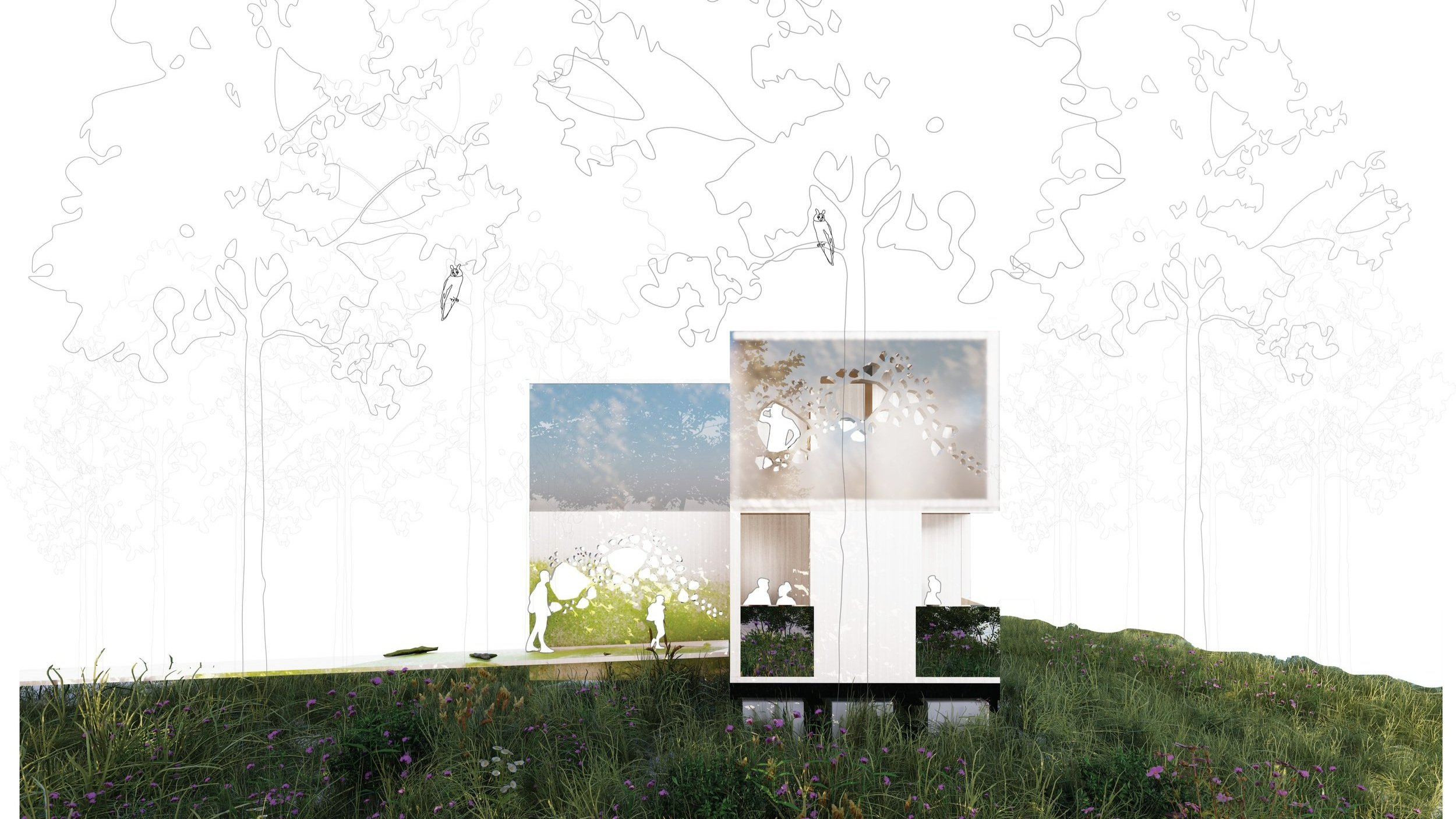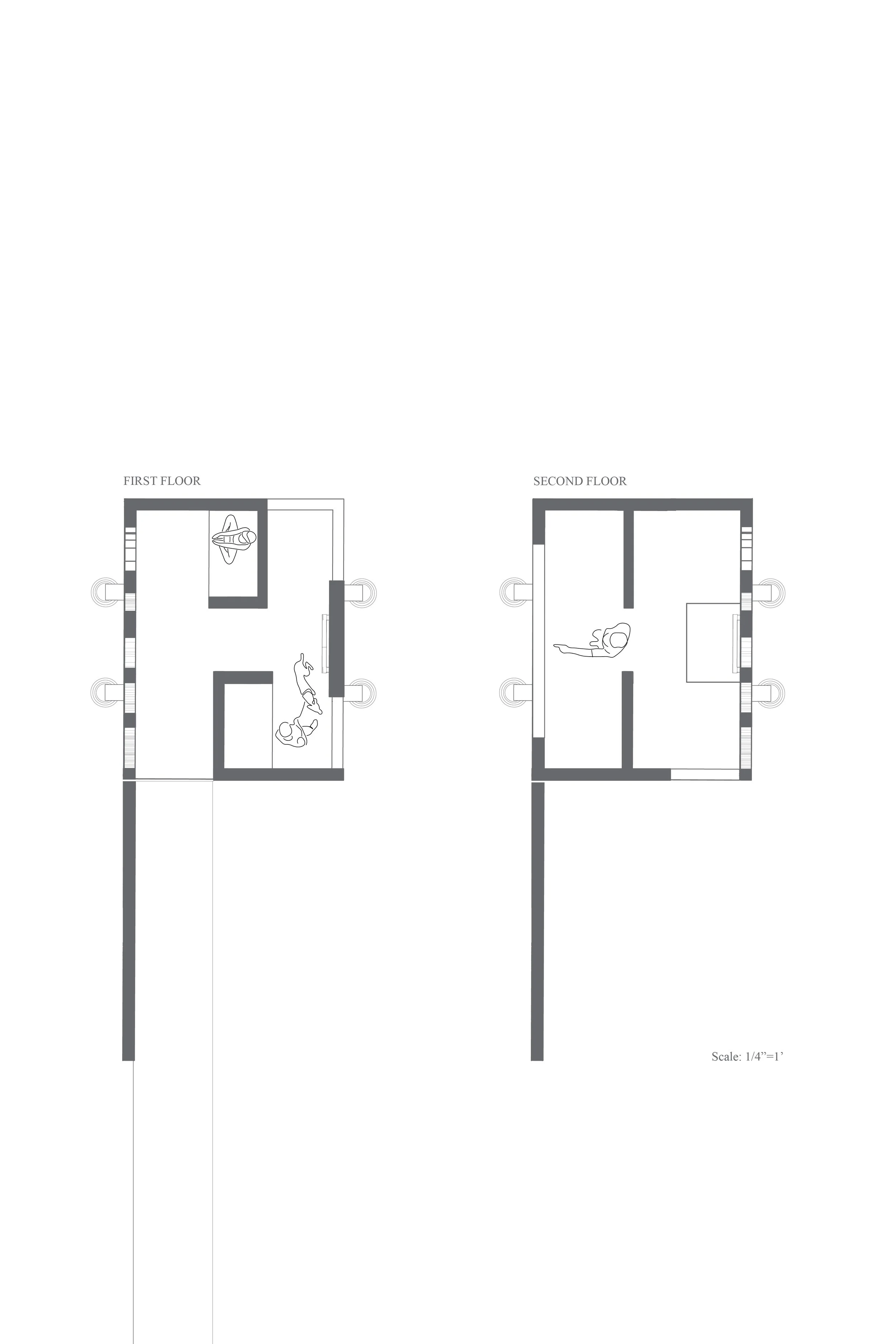
Amphibius Bird Blind
Chatfield State Park’s bird blind design is inspired by the large-scale flooding that can occur within the confines of the park. Although large-scale flooding is uncommon in the area, the trees located around the structure tell a story of the flooding that has occurred in the past. The coloration of tree bark varies at a line six feet above typical ground, indicating flooding events.
The structure is designed with a form follows function approach and moves amphibiously with site flooding. With buoyant material and guideposts that rise and fall with the height of the water, the bird blind is designed to withstand large-scale flooding.
The second floor separates designated spaces for a variety of species of birds is created. The second floor is for viewing birds that tend to stay in the trees, while the first floor has the best views out to the birds that frequent the water.
Different materials were chosen to create moments of public or more private areas for an occupant to bird watch, and various apertures of different shapes and sizes mimic the sunlight that peaks through the cottonwoods on a sunny day.
The extended stationary wall does not float up and down with main structure and was created to guide visitors into the structure. By using a similar aperture pattern from the outside threshold wall and into the interior wall, a smooth transition is created, bringing the outside in and the inside out.
Finally, by leaving the threshold wall stationary, flooding occurs and stains the wall, where mud and algae accumulate each time, experiencing the discoloration like the trees surrounding it.
In July of 2015, Chatfield State Park witnessed the largest flood that the area has seen since the construction of the Chatfield dam in 1967. The waters rose about 10 feet within the park. The bird blind structure will reach a height limit of 15 feet, ensuring the structure would be safe in event of another large-scale flood.









